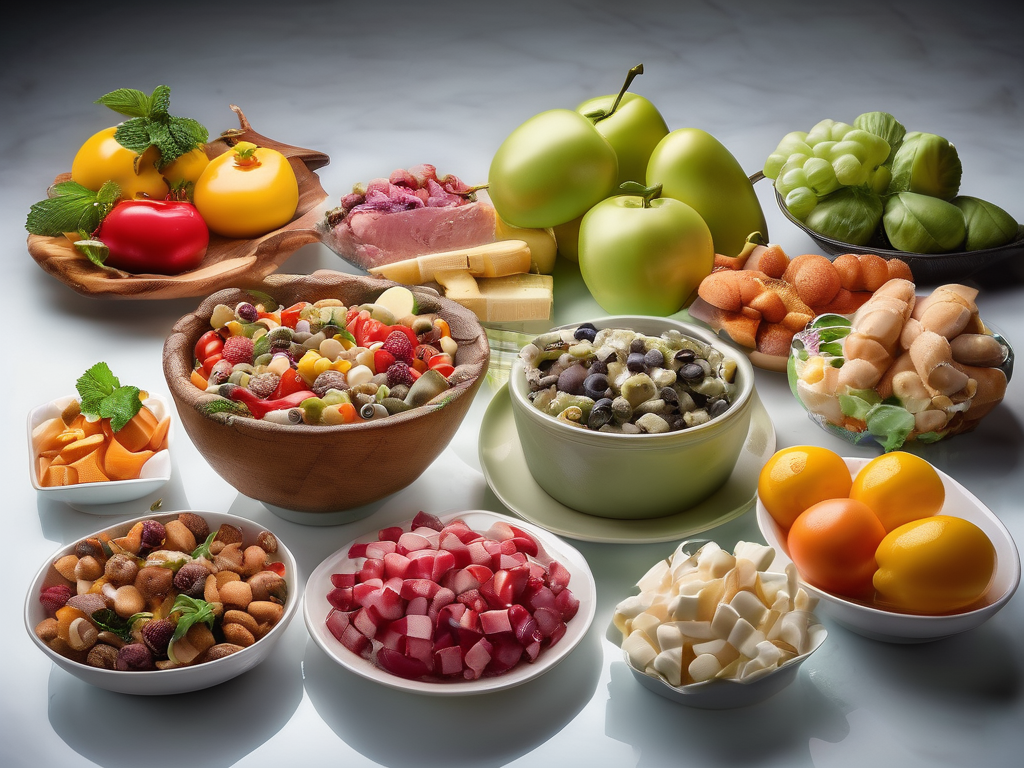
The Best Ways to Properly Store Gravy Chicken Commercially Bottled or Canned Opened for Maximum Freshness
Get Your Free Food Safety Cheat Sheet
30 most common foods with instant answers. Print it and stick it on your fridge—completely free!
The Best Ways to Properly Store Gravy Chicken Commercially Bottled or Canned Opened for Maximum Freshness
Gravy chicken is a delicious and versatile ingredient that you can incorporate into various dishes. Whether you use commercially bottled or canned gravy chicken, proper storage is essential to maintain its freshness and quality. In this blog post, we will discuss the best ways to store gravy chicken to ensure that it stays fresh for as long as possible.
Understanding Gravy Chicken Storage
Before diving into the specifics of storing gravy chicken, it's important to understand the factors that can affect its shelf life and quality. Here are a few key points to keep in mind:
Factors Affecting Gravy Chicken Shelf Life
- Ingredients: The quality of the ingredients used in the gravy chicken can impact its shelf life.
- Storage Temperature: Gravy chicken should be stored at the appropriate temperature to prevent bacterial growth.
- Container Quality: The quality of the container can affect the shelf life of gravy chicken.
- Seal Integrity: Ensure that the container is properly sealed to prevent air exposure.
Now that we have a better understanding of the factors influencing gravy chicken storage, let's explore the best ways to store it for maximum freshness.
Proper Storage Tips for Gravy Chicken
1. Refrigeration
- Store opened gravy chicken in the refrigerator promptly after use.
- Keep the gravy chicken in an airtight container to maintain freshness.
- Ensure the refrigerator temperature is set to 40°F (4°C) or below for optimal storage.
2. Freezing
- If you have leftover gravy chicken that you won't consume immediately, consider freezing it.
- Transfer the gravy chicken to a freezer-safe container or resealable bag.
- Label the container with the date to track its freshness.
3. Avoiding Cross-Contamination
- Store gravy chicken away from raw meats and other perishable items to prevent cross-contamination.
- Use separate utensils for serving to avoid introducing bacteria from other foods.
4. Reheating Safely
- When reheating gravy chicken, ensure it reaches an internal temperature of 165°F (74°C) to kill any bacteria.
- Stir the gravy chicken thoroughly to ensure even heating.
5. Checking for Spoilage
- Before consuming stored gravy chicken, check for any signs of spoilage such as off smells, unusual colors, or mold growth.
- When in doubt, discard the gravy chicken to avoid foodborne illness.
Conclusion
Properly storing gravy chicken is crucial for maintaining its quality and flavor. By following the tips outlined in this blog post, you can ensure that your commercially bottled or canned opened gravy chicken stays fresh for longer periods. Remember to refrigerate or freeze the gravy chicken promptly, avoid cross-contamination, reheat it safely, and always check for signs of spoilage before consuming. By taking these steps, you can enjoy delicious gravy chicken dishes with confidence in their safety and freshness.
Authoritative Food Safety References
These agencies and university labs inform every tip and health precaution we publish.
USDA FoodKeeper – Cold Storage Guidelines
Official refrigerator, freezer, and pantry timelines maintained by the U.S. Department of Agriculture.
Visit USDA FoodKeeperFDA Produce Safety Rule & Grower Guidance
Field-to-fridge handling practices that prevent contamination of fruits, vegetables, and leafy greens.
Visit FDA Produce SafetyCDC Foodborne Illness Prevention Hub
Surveillance-backed guidance on pathogens, symptoms, and steps to reduce foodborne illness risk.
Visit CDC Food SafetyUC Davis Postharvest Technology Center
University research detailing optimal storage atmospheres for produce after harvest.
Visit UC Davis PostharvestPenn State Extension – Home Food Preservation & Safety
Peer-reviewed extension bulletins on safe canning, chilling, and reheating practices.
Visit Penn State ExtensionGet Your Free Food Safety Cheat Sheet
30 most common foods with instant answers. Print it and stick it on your fridge—completely free! Want more? Upgrade to the complete guide with 70+ foods.
Scan your food directly and get instant safety info using our AI-powered camera feature.